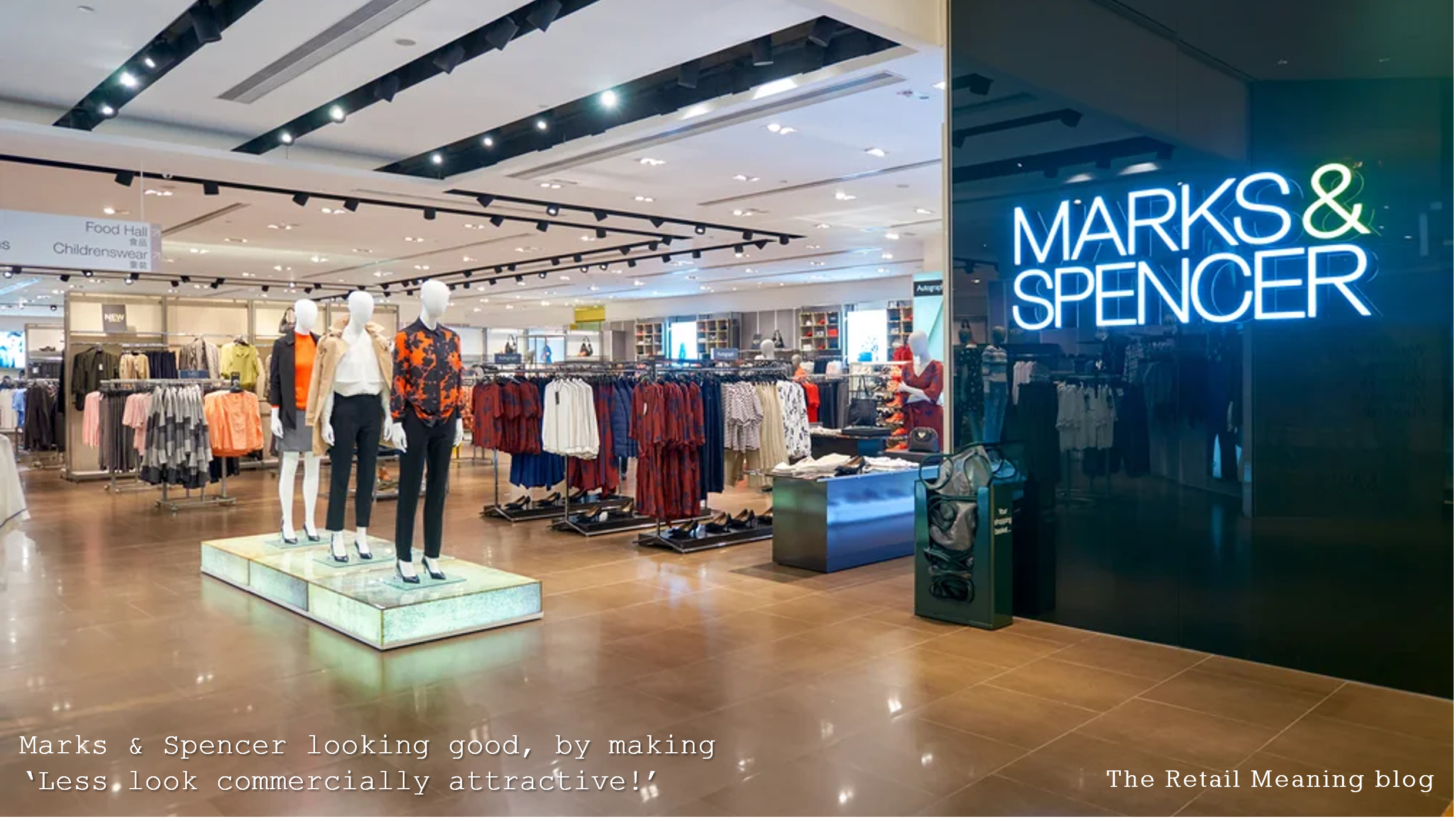Marks & Spencer continues to impress with its sales figures and market share across fashion and home, as well as the more predictable food category. And whilst few would argue that they have the most exciting shops on the high street, the ambitious and highly successful store regeneration program is already reaping rewards, and putting physical firmly at the heart of its retail empire, once again.
The fact is that the best customer experiences are not always about the ‘wow!’ factor. They are about ensuring that your customers get what they want. That you don’t let them fail in what they came in to do. M&S has hit the nail on the head, as it re-models its business around what their customers want. The new stores are pleasant without being spectacular, attractive without being inspirational, but they are full of authority, ease of shop, and happy customers filling their bags and baskets with what they came in to buy.
They are succeeding largely by putting into practice one of the most difficult messages to get across to any group of buyers & merchandisers. That by reducing your number of options, you can drive more sales & profit. Over recent seasons, M&S has kindly released figures that prove exactly this. A reduction in womenswear options has certainly not held back sales growth. Although its womenswear range has been streamlined by 5%, sales have jumped 15%.
Of course, it is more complicated than just numbers. The reduced options that survive must be more focused than ever on what the customer wants. The reduced options need to be the correct ones.
This is why retailers get nervous about assortment cuts. In many cases they have neither the quantitative research, nor the qualitative experience, to select the most commercial categories and options, in the most attractive and desirable designs and colours.
M&S has shared its homework. The lessons are bold and refreshingly simple.
Removing duplication, buying better and deeper in core product, and investing in emerging growth categories means M&S now stock more stylish, better value ranges that are easier to shop. What’s more, apparently last season the business had 276 lines that generated sales of more than £1m each and sales of those lines were up 25% year on year.
In short, understand what sells, and critically, understand what could have sold more if you had bought more stock. You can only sell what you have! Comprehensive sales data, both analytical and visual, and some smart people to understand it, is of course a necessity.
M&S has also benefitted from a strategic focus on depth and availability improvements, as well as competitive pricing, on its essential and non-discretionary products.
Put simply, take the most popular lines over time, remove poorer selling similar lines, inject a little sensible newness, buy them in depth, and sell with competitive prices. You will still have to work hard to add more seasonal and fashionable lines, but at least this element of risk can be set against the relative certainty of perennial best sellers.
Additional benefits of buying less will also include higher initial & achieved margins, a simplified supply chain and more stable supplier relationships. What will also happen is that the number of unsold ‘risks’ will decrease, and the amount of unsold stock earmarked for waste should be dramatically reduced. Getting better at buying less, and better at selling more of it, is a cornerstone of sustainability.
So take a lesson from Marks & Spencer, and whilst none of this is rocket science it could just send your customers, and your CEO over the moon, and back.
Guess how much they’ll love you then?
